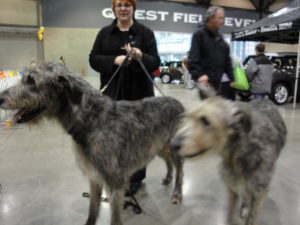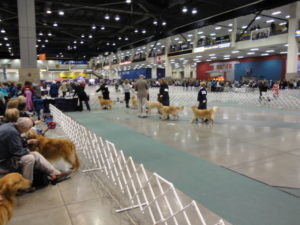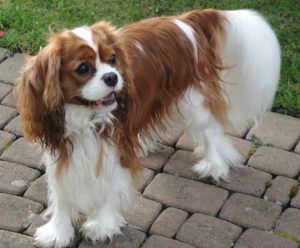 Live with a dog or want to? Do yourself, and the dog, a huge favor and find out what’s in it. Purebred or mixed-breed, there’s hundreds of years of genetics involved that can make or break a family. In short, there’s a lot going on in your dog.
Live with a dog or want to? Do yourself, and the dog, a huge favor and find out what’s in it. Purebred or mixed-breed, there’s hundreds of years of genetics involved that can make or break a family. In short, there’s a lot going on in your dog.
I know. As someone who lives with dogs, writes about the human-animal bond, and works as an animal communicator, I know that most of the enchantment and heartbreak of living with dogs comes down to their breeding.
Yes, you want a healthy dog, no question. And no, I don’t care where you go to get one (I do, but I won’t get into that now). What I want, and I know you want, is to get a dog that suits your lifestyle. Well, guess what? Your dog wants the same thing. And needs it, to stay in the happy home you’re creating for it.
 As you know, for hundreds of years the dogs we live with now did work we bred them to do, from herding cattle and sheep to guarding the castle, killing rats, and especially, of course, being loyal companions. Purebred or mixed breed, there can be a lot going on in there.
As you know, for hundreds of years the dogs we live with now did work we bred them to do, from herding cattle and sheep to guarding the castle, killing rats, and especially, of course, being loyal companions. Purebred or mixed breed, there can be a lot going on in there.
For example, back in 1998 I was researching breeds. It had been 12 years since I had a dog, my beloved English Cocker Spaniel, Maggie. But the dogs I was looking at didn’t feel right to me, just … not right for me anymore. I wanted a smaller, easier dog, and considered the Norfolk and Norwich terriers. I talked to a few people who had them, who rightly warned me that terriers were a handful no matter their size and needed more exercise than I could provide, and so terriers got eliminated.
Then I did what I’m going to suggest you do: I checked out the American Kennel Club (AKC) registry, and just read about the different breeds. If you’ve ever watched a dog show on TV (or gone to a show, like this weekend’s Seattle Kennel Club Dog Show), you know the dogs are shown by breed first and group second. So dogs fall into toys, hounds, herding, working, sporting, terriers, and non-sporting (miscellaneous, dogs who don’t fit other categories).
Within those categories are dogs who are bred for certain functions. Dogs like Dalmatians are bred to run all day, others like the working group’s Bernese Mountain Dogs were used in the Swiss Alps as farm dogs. Cavalier King Charles Spaniels, like my dog, Ollie, are toy dogs, bred to be companions first, and indifferent birding dogs second (the lords of the manor used them to flush birds, who knows why, with all that hair).
So what’s the problem? There isn’t one, if you do your homework. Sadly, too many people don’t.

I ended up with a Cavalier because of size and temperament. I’m handicapped, and couldn’t go as far as an English Cocker needs, let alone many of the other breeds. In other words, I did my research to find a dog I could live with who could also live with me. Three dogs later, we’re doing just fine.
Other dogs are not. I know someone who adopted a shelter dog who clearly had herding blood in its background. This dog did what came naturally to herding dogs, who were bred to nip at the heels of cattle and sheep to keep them moving in the right direction. This dog nipped at its owners’ feet, scaring them since they were older and had stairs. They followed their veterinarian’s advice and euthanized him.
Tragic, shocking and unnecessary, if that’s the whole story. First, they should have gone to a shelter who could better guess what was in the dog’s breeding and advise them on what to expect; and second, they should have returned him to the shelter in hopes he could find another home. My opinion. Probably yours, too.
I also know plenty of people who bought dogs they thought were cute but did not fit their lifestyle. Hounds who were left home unattended all day and became sullen and snappish. Big breeds like Shepherds and Labradors and Golden Retrievers who lost their homes because they grew up untrained and couldn’t be managed (some of these breeds are puppy-like for three years or more, meaning early and prolonged training is essential). A friend who went to the shelter and brought home a large breed dog who destroyed her furniture, but who called me crying, asking what to do, and worked with a trainer I recommended (eight years later they are still a happy pair).
So how do you decide?
Check out the AKC site, as suggested. And head off this weekend to the dog show. Watch the dogs in the ring, attend the Meet the Breed groups both days, to learn about breeds that intrigue you, and visit the many booths that breed clubs staff to let you meet a dog and ask questions. These are people who love dogs, know their dogs, and want for you and the dog you choose (and who chooses you) to live happily ever after.
And have fun!
© 2017 Robyn M Fritz